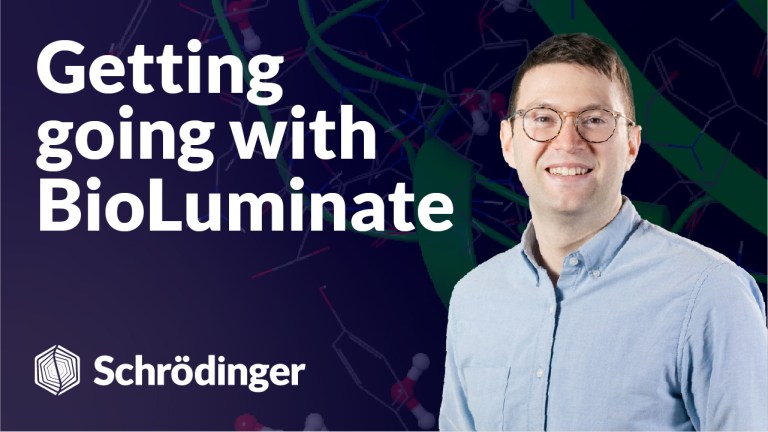Free learning resources
Quickly learn how to integrate Schrödinger technology into your research. From overviews to deep dives, you can find information about applications, workflows, and analysis here.
Quickly learn how to integrate Schrödinger technology into your research. From overviews to deep dives, you can find information about applications, workflows, and analysis here.
 Video
Life Science
Video
Life Science
 Video
Life Science
Video
Life Science
A free video series introducing the basics of using Maestro Bioluminate.
Self-guided step-by-step introductions to various workflows with example files for getting comfortable with Schrödinger tools.
Short video overviews of specific introductory and scientific topics, including summaries of new release features.
A one-page PDF that visually describes the panel or workflow.
Learn how to prepare structures for docking and create a protein mutation by modeling an olfactory receptor.
 Video
Life Science
Video
Life Science
A free video series introducing the basics of using Maestro Bioluminate.
 Video
Life Science
Video
Life Science
A structured overview of tools and workflows for T Cell receptor engineering.
Learn to prepare a complex protein system for a Molecular Dynamics (MD) simulation.
Learn to use the Coarse-Grained Force Field Builder to automatically fit parameters to the Martini coarse-grained force field for a complex protein solution system.
Investigate the effect of mutations in an alkene reductase from the OYE family on enzyme stability and ligand binding.
Learn to build and analyze a complex lipid bilayer and how to embedd a protein.
Learn to calculate the thin plane shear viscosity and friction coefficient.
A one-page guide to using the GlideMap GUI for ligand placement guided by experimental density.
A structured overview of tools and workflows for nucleic acids in drug discovery.
Run the unbinding kinetics workflow on a kinase system and analyze the results.
Level up your skill set with hands-on, online molecular modeling courses. These self-paced courses cover a range of scientific topics and include access to Schrödinger software and support.
Connect your students to industry-leading molecular modeling software through a web-based platform. Incorporate molecular modeling in the classroom.